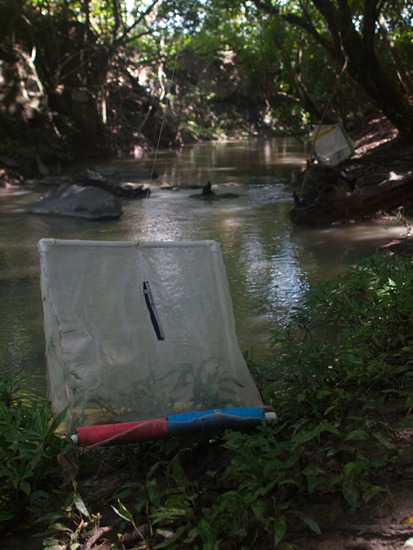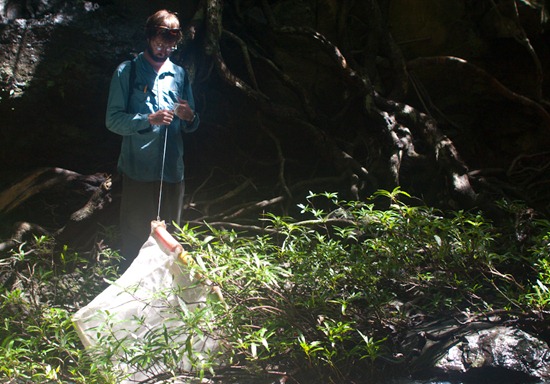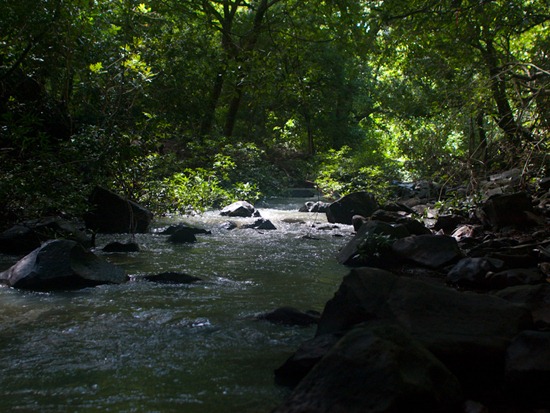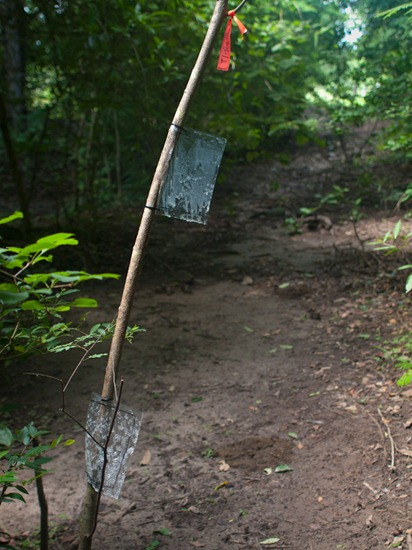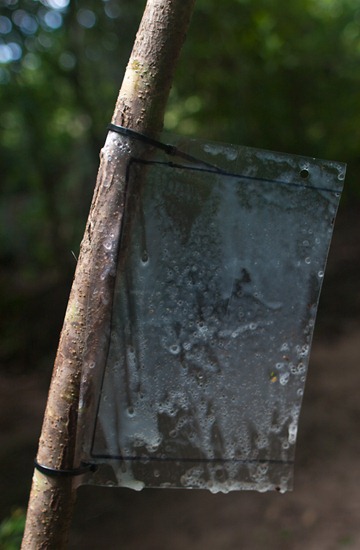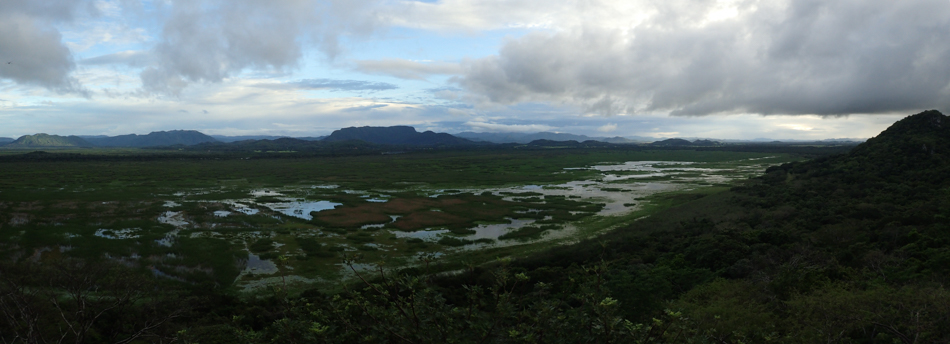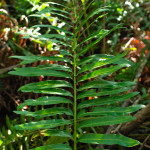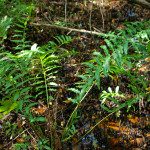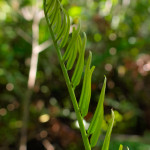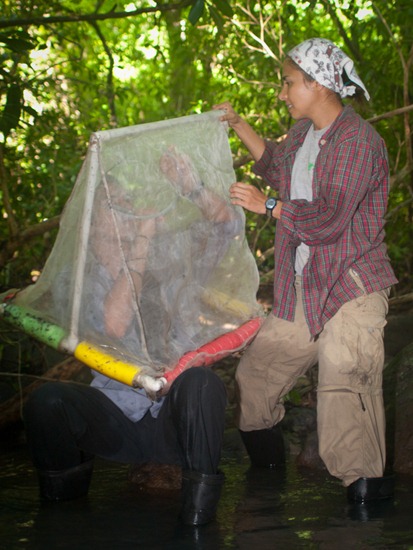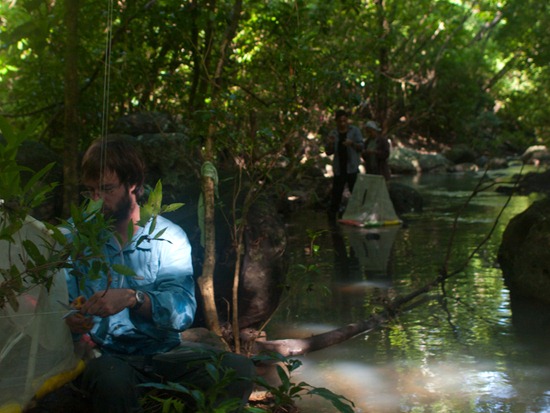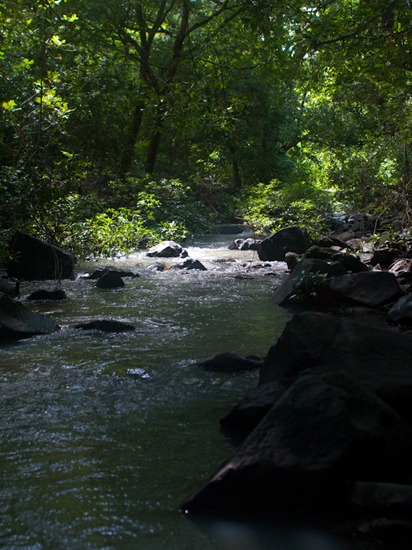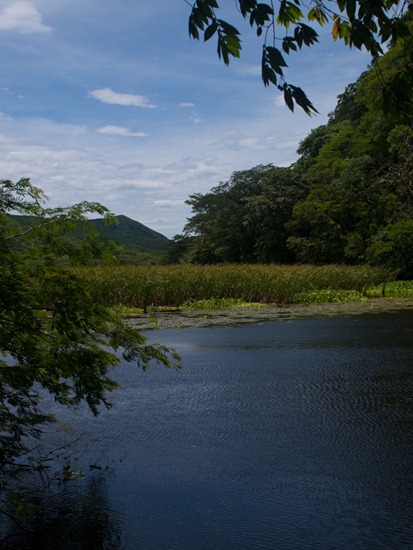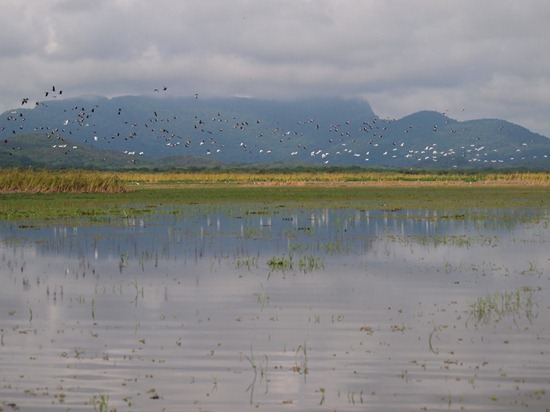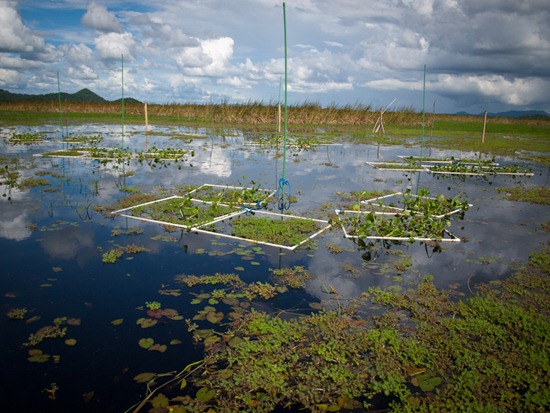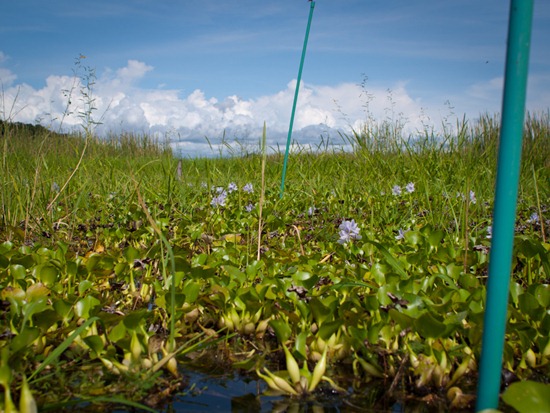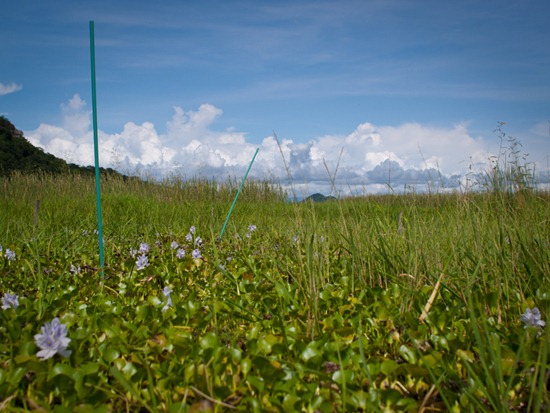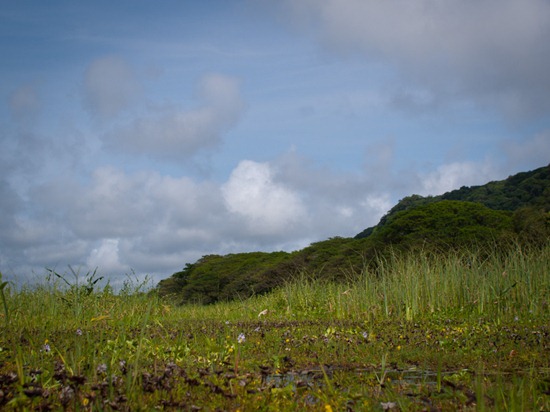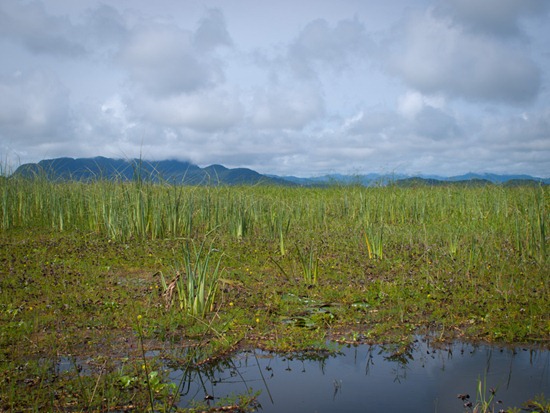Ignore the video (it’s unclear), and appreciate the audio of these mantled howler monkeys (Alouatta palliata) calling in Palo Verde last year.
Tag Archives: Palo Verde
Another Sunrise from Guayacan
Not quite a dramatic as previous sunrises, but here’s the last sunrise I created a timelapse of from the peak of the Guayacan trail in Palo Verde in 2017. We got a late start (not mentioning any names, Barkley), so there was quite a bit of light by the time we reached the peak and I set the camera up.
A full frame version created from my camera:
A timelapse of the same sunrise, created a few minutes earlier with a locked exposure—the images became over-exposed quite quickly…
Panorama from La Roca
Sunset at La Roca
I’ve captured a new sunset timelapse from Palo Verde using an Olympus Tough Stylus TG-4 set to capture a single image every 10 seconds and combining the images with iMovie.
The first video displays each of 149 photos for 0.1 secs, while the second video displays photos for 0.2 secs and appears more choppy.
These two videos joins several others that I produced and posted in 2009:
Mangrove fern
I think this is a salt-tolerant mangrove fern, Acrostichum aureum, inhabiting the understory of mangroves in southern Florida’s 4-mile Cove Ecological Preserve.
I’ve also seen this species in Costa Rica, where it lines some of the banks at the mouth of Rio Sierpe, and has colonized some wetlands in Guana Caste.
Helping Ramsa
While in Palo Verde last summer, I met Ramsa Chaves, a graduate student at Dartmouth College under Brad Taylor and UCR licenciatura graduate. She used the OTS station in Palo Verde as a headquarters for her research on insect communities associated with streams in the Guanacaste region. Her and one or more assistants traveled to local streams that varied in surrounding land-use and sampled emergent insects during the day, returning to sort and process the catch in PV in the evening. I helped out one of those days to get a taste of her extraordinary and ambitious research project. From memory, Ramsa aimed to examine responses of insect communities to land-use differences and how these responses play-out in aquatic-terrestrial linkages.
We sampled two streams that she and Jereme had set traps in and around three days prior. In Quebrada Amores (lovers stream) within Reserva Biológica Lomas de Barbudal emergence traps were emptied. The floating, triangular traps, as suggested by their name, capture adult insects as the emerge from the stream to breed and feed in the surrounding terrestrial environment.
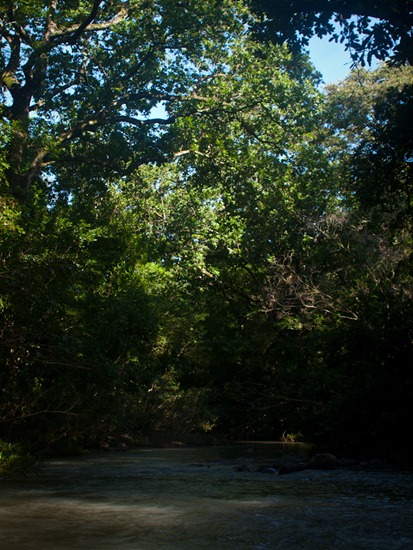
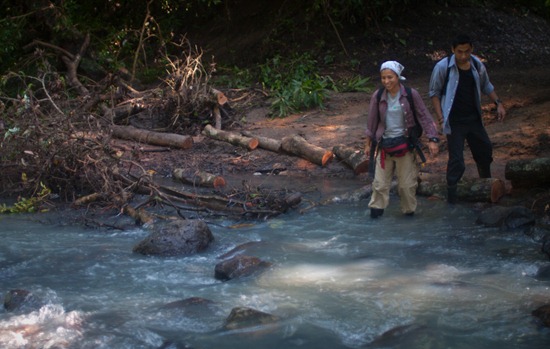
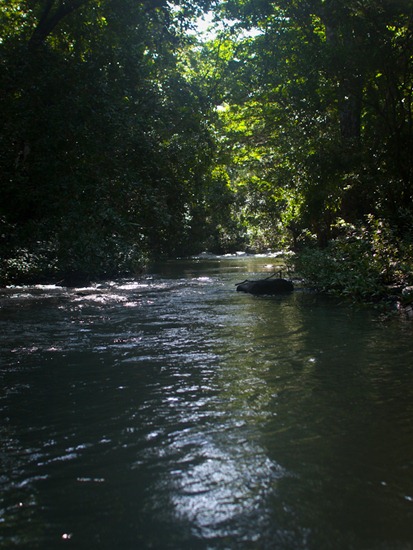
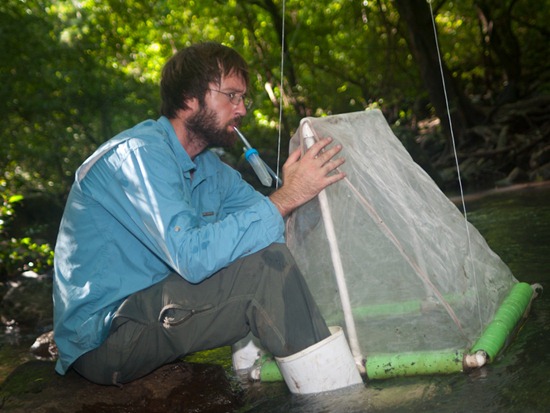
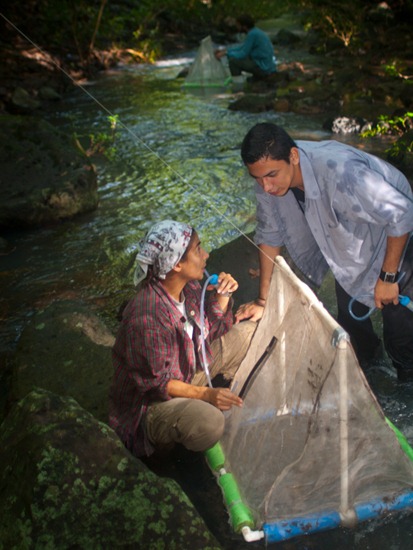
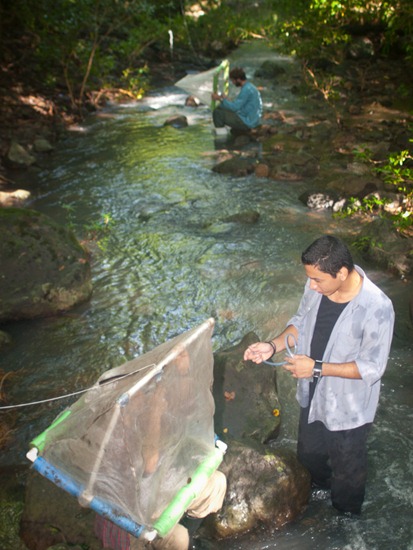
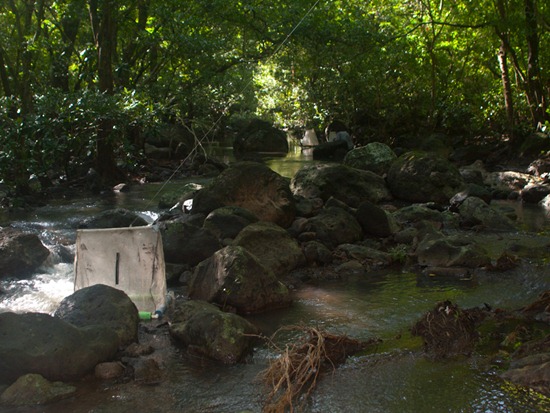
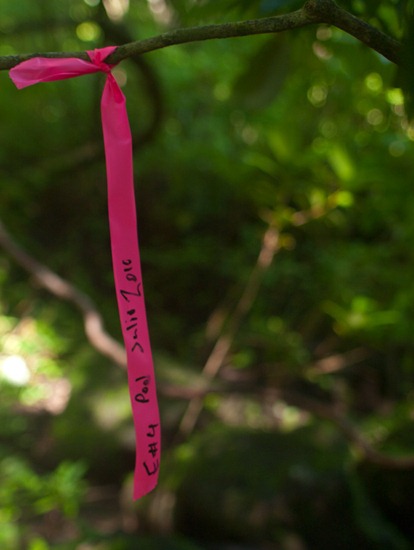
Río Pijije drains agricultural and residential land, in contrast to the protected, forested land-use surrounding Quebrada Amores. Emergence traps had settled ashore after a flash flood, and were not sampled, a common occurrence in the rainy season in dry forest areas. Sticky traps (transparent over-head sheets covered in glue, basically) were placed from 10 to 100 m from the stream edge to sample flying insects as they moved from the stream outward into the the forest or, in this case, cow pasture. In addition to sticky traps, we sampled using butterfly nets, which are not pictured here (probably for two reasons (1) I was sampling and (2) I knocked my net into a large paper wasp next and was promptly stung many, many times. It was an extremely memorable event for me). Both sampling methods have hopefully painted a picture for Ramsa showing how insects respond from and to a stream draining catchment with different land-use patterns.
